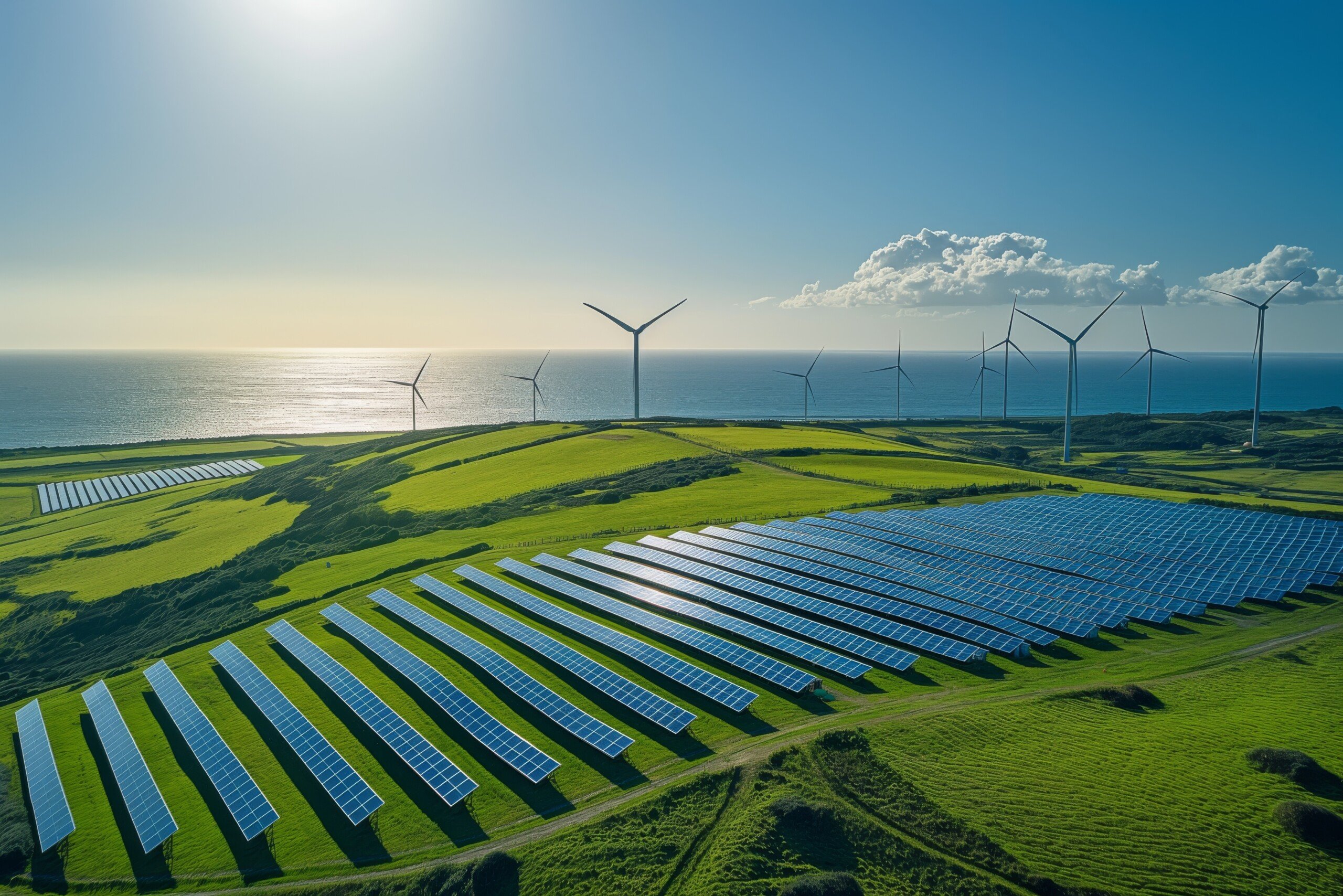NEWS & INSIGHTS | Opinion
The potential of geothermal energy and the possibility of North Sea grid connectivity

Geothermal energy potential; UK clean electricity achievements; Hybrid interconnector milestone
Chief technology officer Luca Corradi and his team monitor the global net zero landscape closely. They follow the trends, policies, investments and technology innovations that get the world closer to its shared climate goals. Learn more about our horizon scanning service. This week, Luca and team share a recent report from IEA on the future of Geothermal energy, look at UK’s 2024 clean electricity generation progress, and share LionLink’s newest milestone in connecting Dutch offshore wind to UK and Dutch grids.
Geothermal
Currently, geothermal meets less than 1% of global energy demand. However, with technology improvements and cost reductions, it could meet up to 15% of global energy demand growth by 2050. Moreover, among renewable technologies, the technical potential of next-generation geothermal systems for electricity generation is second only to solar, and is sufficient to meet global electricity demand 140 times over.

Direct and indirect geothermal energy consumed for heating and cooling by
application, world (left) and top 10 consumers (right), 2023
Advances in technology, such as horizontal drilling, are opening new opportunities for geothermal all around the world. Applications of geothermal include ground-source heat pumps, district heating networks and electricity generation with the ability to provide dispatchable power or operate continuously. On average, global geothermal capacity had a utilisation rate over 75% in 2023, compared to less than 30% for wind and less than 15% for solar. Geothermal costs remain high compared to other low-carbon technologies.
The IEA estimates that with policy and innovation support, alongside the expertise of the oil and gas sector, costs for next-generation geothermal could fall by 80% by 2035 to deliver electricity around USD 50/MWh. This would make geothermal one of the cheapest dispatchable sources of low-emissions electricity. The oil and gas sector could play a key role in the future of geothermal with up to 80% of the investment required in a geothermal project involving capacity and skills that are common in the oil and gas industry.
UK electricity in 2024
Analysis by Carbon Brief shows the UK’s electricity was the cleanest yet in 2024. Following the phase out of coal, fossil fuels made up the lowest share of electricity generation on record at 29%. Renewable electricity generation had a share of 45%, with generation more than doubling in the last 10 years from 65 TWh in 2014 to 143 TWh in 2024. Gas-fired power stations remained the UK’s single-largest source of electricity generating 88TWh, ahead of wind at 84TWh. 58% of electricity came from clean sources, a long way off the government’s target of at least 95% clean power by 2030.
The carbon intensity of electricity has fallen from 419 gCO2/KWh in 2014 to just 124gCO2/kWh in 2024. This has resulted in electric vehicles having lifecycle CO2 savings of 70% compared to petrol cars, up from 50% in 2014. Similarly, replacing a gas boiler with a heat pump now cuts heat-related CO2 emissions by 84% per year, compared with 45% in 2014.

Analysis by Carbon Brief shows that in 2024, the UK’s electricity was the cleanest yet.
Hybrid interconnector
The Dutch government have included LionLink, a hybrid interconnector, in the latest Dutch Offshore Wind Energy Development Framework, allowing TenneT to make investments in the project. The project connects the Dutch offshore wind farm Nederwiek 3 to both the UK and Dutch onshore high-voltage grid and can also be used as a high-voltage link between the countries. TenneT, National Grid Ventures and the Dutch and UK governments will work together on the next steps to get the connection operational in 2032.
LionLink is said to be the first direct-current hybrid interconnector and is a step towards a more interconnected North Sea grid. It will provide benefits for the UK and Netherlands, as it ensures improved security of supply, higher cable utilisation rates and efficient use of space in the North Sea. According to National Grid Ventures, LionLink will supply up to 1.8 GW of electricity, save UK consumers almost £300 million in its first 10 years of operation, and provide carbon savings equivalent to taking 600,000 cars off the road in its first year.

Investments can now be made on the LionLink project. The project will connect the Nederwiek 3 wind farm to the GB and Dutch onshore high voltage grid and provide a high-voltage link between the countries.
Photo credit: Tennet
Our horizon scanning service helps you keep up to date with net zero technology advancements, investments and policies. Learn more about horizon scanning.
Subscribe for the latest updates





